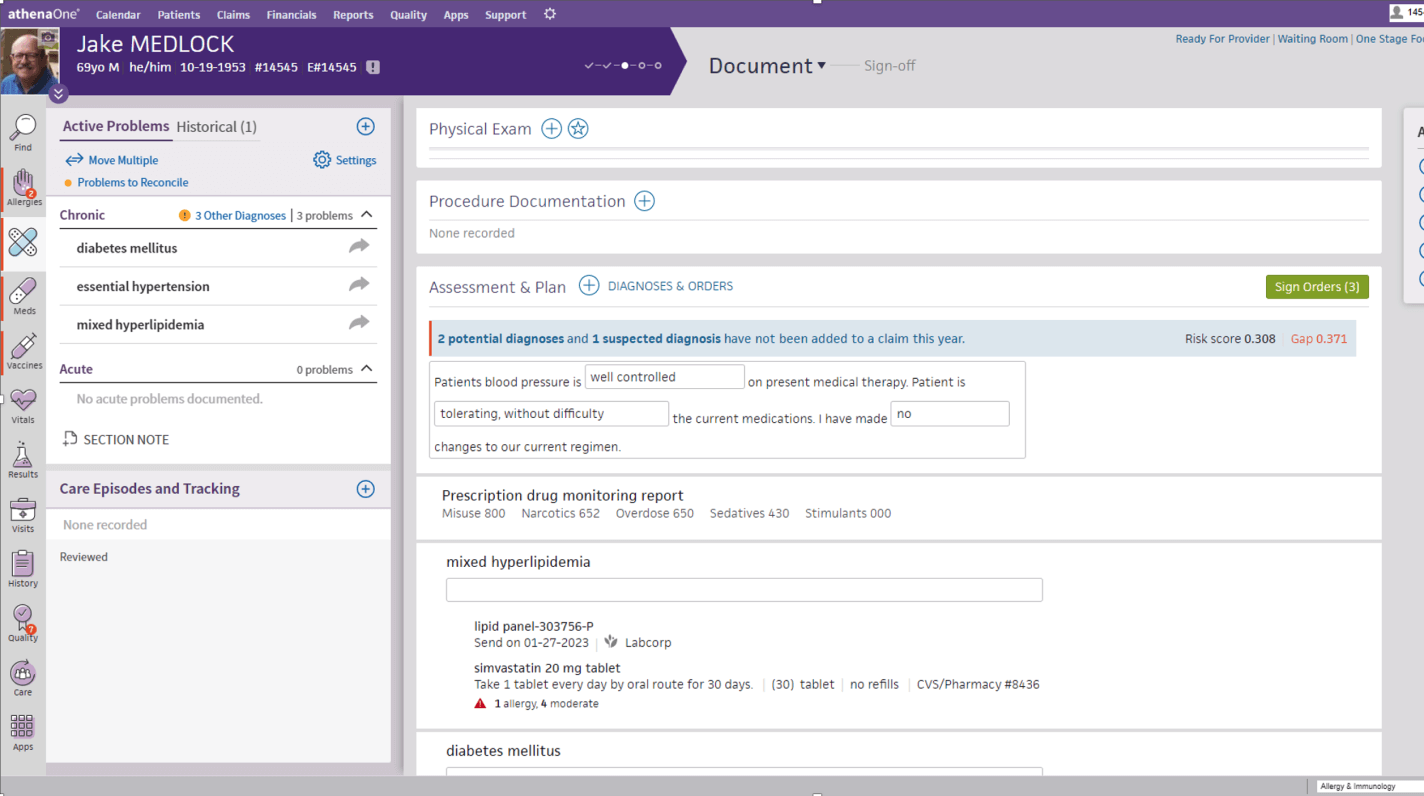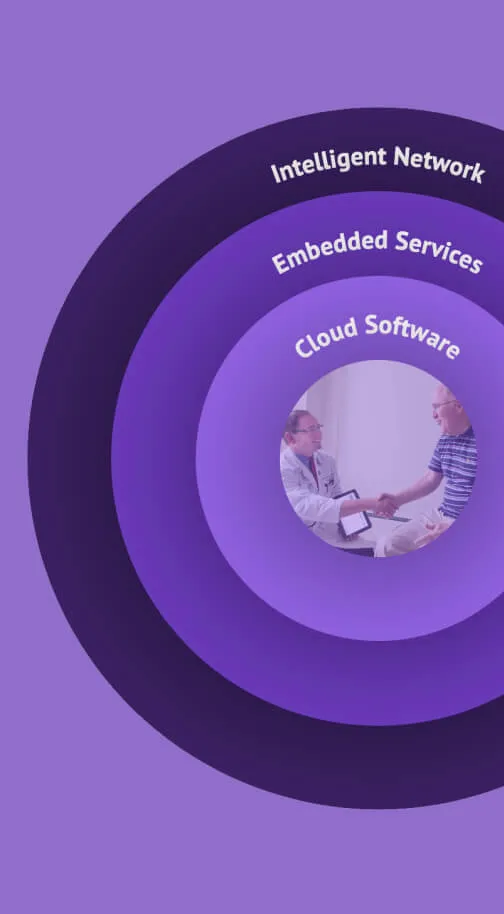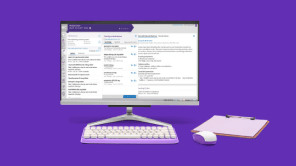From a technology standpoint, there are essentially four types of electronic patient records software, all built to maintain electronic records of patients’ health and medical histories. These different types of electronic medical records systems are generally grouped into four categories: installed (or on-premises) software; application service providers (ASPs); Software as a Service (SaaS); and cloud-based services.
In this article, we’ll use electronic medical records software (EMR) and electronic health records systems (EHR) interchangeably, but technically these two types of patient records systems differ in terms of their ability to communicate with other systems and providers.
Here we’ll focus on four types or models of EMR/EHR software designed to maintain health and medical records, looking at how the different EMR systems are built and deployed, and the pros and cons of each to help you find the best type of EHR for your practice, clinic, or healthcare organization.
1. Installed electronic medical records software
Installed software is the "traditional" model of EMR systems, where the electronic medical records software runs on a computer or server that is maintained at the practice location (or “on-premises”). While fairly straightforward, onsite EMR software like this typically requires you to make an upfront IT investment just to get the technology up and running, and you may need dedicated IT personnel to manage it. This type of electronic medical records system must also be updated manually when new versions or patches are released by the EMR software vendor, often at extra cost.
While these types of EMR programs can work well to digitize your paper patient records, they lack the ability to communicate with outside systems. This means that a doctor can only see the patient’s medical records from their own practice, with no visibility or data exchange to other healthcare providers who may also see the patient. Your practice’s accumulated data exists only within the silo of your office and is visible only to people who are logged directly into the system.
Considerations for an onsite EMR system:
- Typically comes with higher upfront costs for IT infrastructure and the burden of maintaining it
- Software upgrades, updates, or bug fixes often require disruptive and expensive new installations
- Health data provides little value beyond record keeping because it is not visible outside the server location
- Requires you to maintain the hardware that the EMR software runs on and to comply with data privacy considerations
2. Application service provider for electronic medical records
The application service provider (ASP) electronic patient records model is similar to on-premises installed EMR software, but with one key difference: the physical location of the software. Instead of accessing the EHR software from a computer or server located at the medical practice, an ASP EHR program is installed on an off-site server that the vendor maintains and users access remotely. This is an advance over onsite EMR software on the healthcare technology evolutionary scale, and it can reduce your costs for implementation and ongoing maintenance.
The need for the ASP model for EHRs arose as a response to small- and medium-sized practices whose budgets couldn't handle expensive upfront costs for healthcare software. ASPs may deliver lower start-up costs for smaller medical practices implementing an electronic health records system, but just like EMRs installed on-premises, the ASP type of electronic medical record only contains your specific practice’s data and cannot exchange information with other healthcare providers, such as doctors, labs and pharmacies.
When evaluating different EHR systems, it’s important to note that many ASP vendors may describe their services as being "in the cloud," but what they're really referring to is a type of "closed” or “private cloud" that enables easy web-based access but can't take advantage of an entire network's worth of knowledge and broader, open information sharing. Put simply, ASPs are not cloud-based systems.
Considerations for an ASP model of EMR systems:
- Similar to onsite EMR software installs, but typically with a lower upfront IT cost
- Data is siloed within a single instance of electronic medical records software so users do not get the benefits of a shared network
- Some ASP vendors characterize their technology as “cloud-based” or “in the cloud,” but this is not truly accurate
3. Software as a Service (SaaS) model for electronic health records
With the Software as a Service (SaaS) type of electronic health record systems, all clients access a single instance of the latest, most updated EHR software via a web browser. There's no need for extra technical resources to stand the system up, and you won’t need to perform any software maintenance on the electronic health records system—all that work is done by the HIT provider and all data is stored in the cloud.
SaaS EHR platforms are built as a single version, so you access your own secure instance of the software alongside the many other healthcare systems and practices across the country who also use the system. This means that the entire system can be updated, for all users, at once, and those updates are available to all who access the network. This is an important benefit of SaaS: you know you are always using the most secure and up-to-date version of the software and have access to all the latest features and improvements.
A SaaS model for electronic health records also allows all users to access a shared database of clinical resources to inform care and improve outcomes. A SaaS EHR system can also allow payers, clearinghouses, hospitals, labs, and pharmacies to communicate with each other, so you have all the relevant data you need when you’re in the room with a patient.
Healthcare organizations that use a SaaS solution typically pay a monthly fee, rather than paying a large price upfront. This arrangement can help with cashflow and also incentivizes SaaS vendors to earn your business and loyalty each month because you likely won’t be locked into a long-term contract.
Unlike cloud-based EHR software providers, Software as a Service vendors are primarily focused on managing and maintaining their software, rather than partnering with healthcare practices by providing process-specific services—often via automation and applications of AI and machine learning—for tasks where efficiency and accuracy are paramount. This might include steps like authorization management, medical coding, claims resolutions, and even clinical documentation, among others. This is an important consideration, as some practices greatly benefit from these types of services to scale their operations and/or add additional services for their patients.
Considerations for the SaaS type of EHR:
- Upfront IT costs can be lower because users access their EHR program using a web browser on existing medical practice computers
- Predictable monthly billing that incentivizes vendors to continually earn your business
- SaaS EHR platforms can communicate with other systems used by payers, clearinghouses, hospitals, labs, and pharmacies
- Automatically updated software that is available to users without disruption or the need for IT support
- More connectivity and functionality than other types of software but lack the operational services than many practices greatly benefit from
4. Cloud-based services for electronic health records
The cloud-based EHR model takes the technological advantages of a SaaS electronic health records system and goes even further. EHR companies that offer cloud-based services extend and amplify SaaS benefits by offering continually evolving industry and regulatory expertise and through back-office services as an extension of the technology itself.
This two-pronged approach of software and services is a powerful combination that defines the most sophisticated level of IT evolution among the different types of EHR systems. Using a cloud-based EHR software ensures that you will not only have the latest-and-greatest software at your disposal—you will also have the necessary support to help scale your daily operations and avoid the staffing challenges that continue to make hiring difficult.
Similar to SaaS, you can expect to pay a monthly fee for cloud-based electronic health record software, and you will also have the opportunity to add on services at an additional cost, depending on your needs (now and in the future).
Considerations for cloud-based EHR systems:
- Provides the same benefits as SaaS, including a connected network, and adds back-end services for certain tasks and processes
- Medical practices are supported by industry experts who stay informed on evolving local and federal regulations
- The combination of technology and services creates an ongoing partnership between your organization and the platform and services provider
- Users typically pay monthly for the core system—similar to SaaS—and can add on additional services as needed for an additional cost
Marketplace applications from trusted partners
One benefit of using the cloud-based type of EHR software is access to a marketplace of specialized solutions that integrate directly in the core system so you can personalize your experience and better address the specific challenges you’re facing. For instance, some practices using the athenaOne cloud-based EHR are finding success adding AI-enabled documentation assistants like Suki AI to their main healthcare IT platforms. Other apps add functionality for clinical decision support, prescription and pharmacy management, specialty-specific applications, and many others.
athenaOne, cloud-based EHR software and services
athenaOne is a fully integrated, cloud-based software solution that combines robust electronic health record capabilities with equally strong functions to support practice management, revenue cycle management and patient engagement. There are currently more than 150,000 providers on the athenaOne network.1

athenaOne is interoperable, meaning its extensive network facilitates seamless information exchange and timely insights, delivering the right information at the right time. With athenaOne, you have a holistic view of patients’ health, including past diagnoses, treatments, and other pertinent information to help inform care, close diagnosis gaps, and generally improve the outcomes of your work.
As a cloud-based electronic health records system, athenaOne is updated automatically three times a year for all users.
Teams of technology and industry experts support athenaOne users, who have access to a variety of services to help their organizations scale their operational workloads and address ongoing staffing-related challenges.
As an athenaOne customer, you can also choose from over 480 partner apps and solutions in the athenahealth Marketplace to further customize workflows and address specific task-related challenges.2
If you’re searching for the right electronic health record for your practice, be sure that software-type is part of your evaluation. Each has benefits to offer, depending on your specific needs.
If you’d like to learn more about a leading platform built on the cloud-based service model, consider athenaOne. Reach out to one of our healthcare IT specialists to learn more about how healthcare practices of all kinds are leveraging the athenaOne® all-in-one solution for electronic health records, practice management, revenue cycle management, patient engagement and other services to deliver exceptional, patient-centric care while achieving business success.
- Based on athenahealth data as of Dec. 2023; M010
- Based on athenahealth data as of Jun. 2024; M028












